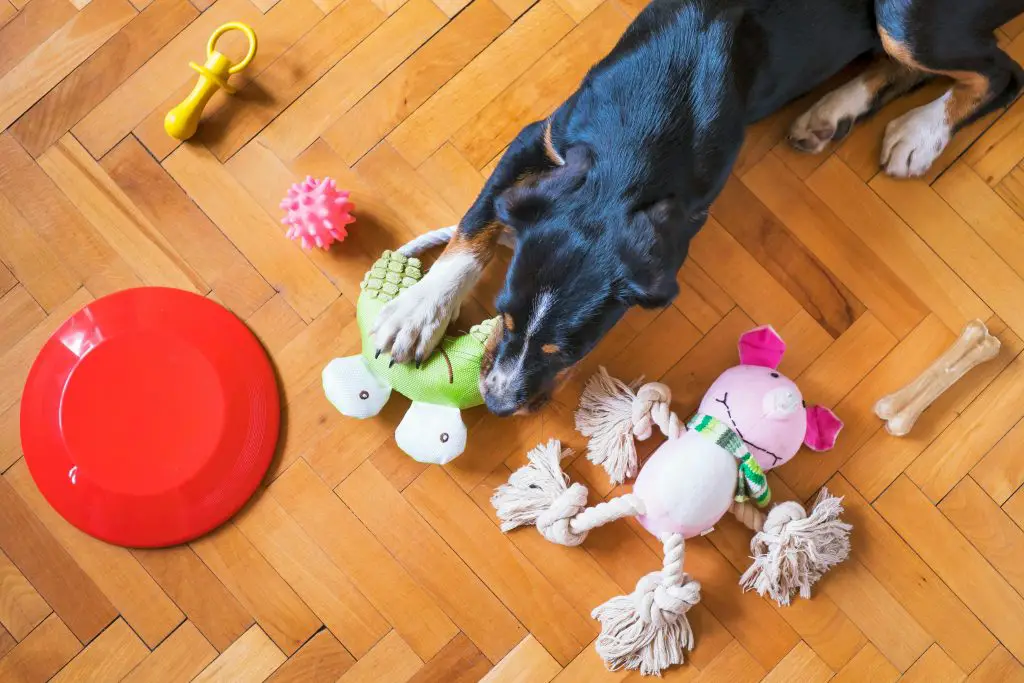
Start by selecting non-toxic, durable toys and a dog-friendly storage container. Teach essential commands like ‘sit’ and ‘stay,’ then introduce ‘put away.’
Use a clicker and treats for motivation. Place your dog’s favorite toys around and guide them to the bin, giving clear commands and immediate rewards.
Maintain consistency and practice daily. As your dog progresses, incorporate more challenges, like hiding toys or using a timer.
Always use positive reinforcement and patience. Keep sessions short and fun, celebrating small milestones.
Following these steps will help your dog master the task and build a productive habit. Discover more details next.
This post contains affiliate links. However all the information provided on this site are my own honest opinions. See more in Disclaimer.
Table of Contents
Key Takeaways

- Prioritize teaching your dog basic commands such as ‘sit’ and ‘stay’ to establish a foundation before advancing to ‘put away.’
- Reward your pup with treats and enthusiastic praise right after they successfully put a toy away to reinforce the behavior positively.
- Begin with their favorite toys and utilize a dog-friendly storage solution to make the process more engaging.
- Consistent practice in short intervals with clear commands will help your dog grasp the concept gradually.
- Incorporate toy tidy-up into your daily routine to solidify the habit and make it a natural part of playtime.
Choose the Right Toys
Selecting the right toys is essential for successfully training your dog to put them away. Start by considering toy safety.

Choose toys made from non-toxic materials that won’t harm your dog if chewed. Inspect for small parts that could be swallowed, as these pose choking hazards.
Toy durability is also critical. Opt for toys that can withstand rough play and frequent handling.
Durable toys are less likely to fall apart, ensuring a longer lifespan and reducing the need for constant replacements.
Next, focus on toy size. The toys should be appropriately sized for your dog. A toy that’s too small might be a choking risk, while an overly large toy can be difficult for your dog to handle or carry. Balance is key here.
Consider the toy material as well. Soft, plush toys can be appealing but mightn’t last long with a vigorous chewer.
On the other hand, rubber or hard plastic toys often offer better longevity and are easier to clean.
Gather Necessary Supplies

Start by choosing a container that’s easy for your dog to access and big enough for all their toys.
Next, pick out a few of your dog’s favorite toys to make the training enjoyable.
Choose Appropriate Container
You’ll need to pick a sturdy, dog-friendly container to store your pup’s toys. Start by considering the container size.
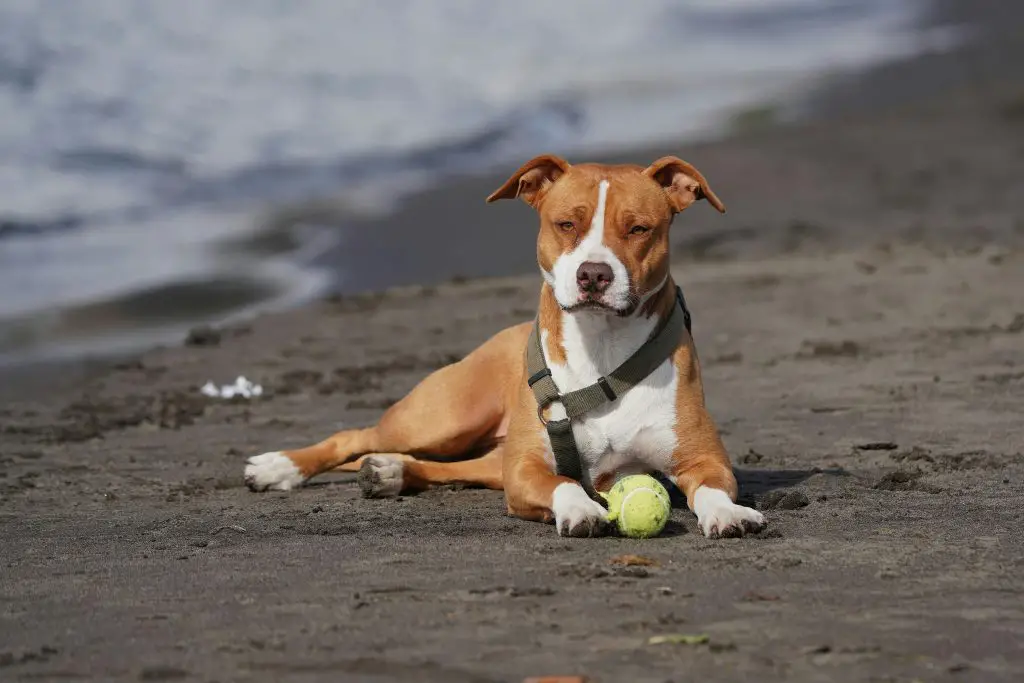
It should be large enough to hold all your dog’s toys but not so big that it becomes challenging for your dog to manage.
A medium-sized container is usually ideal.
Next, think about the container design. Opt for one with low sides or an open top, making it easy for your dog to drop toys in and take them out.
When choosing the container location, place it in an area that your dog can easily access. A spot in the living room or near your dog’s play area works best.
Accessibility is essential; your dog should be able to reach the container without any obstacles.
Avoid placing it in tight corners or high shelves.
Select Favorite Toys
Gather your dog’s favorite toys that will motivate them to participate in the training. It’s essential to select toys that your dog loves and frequently plays with.
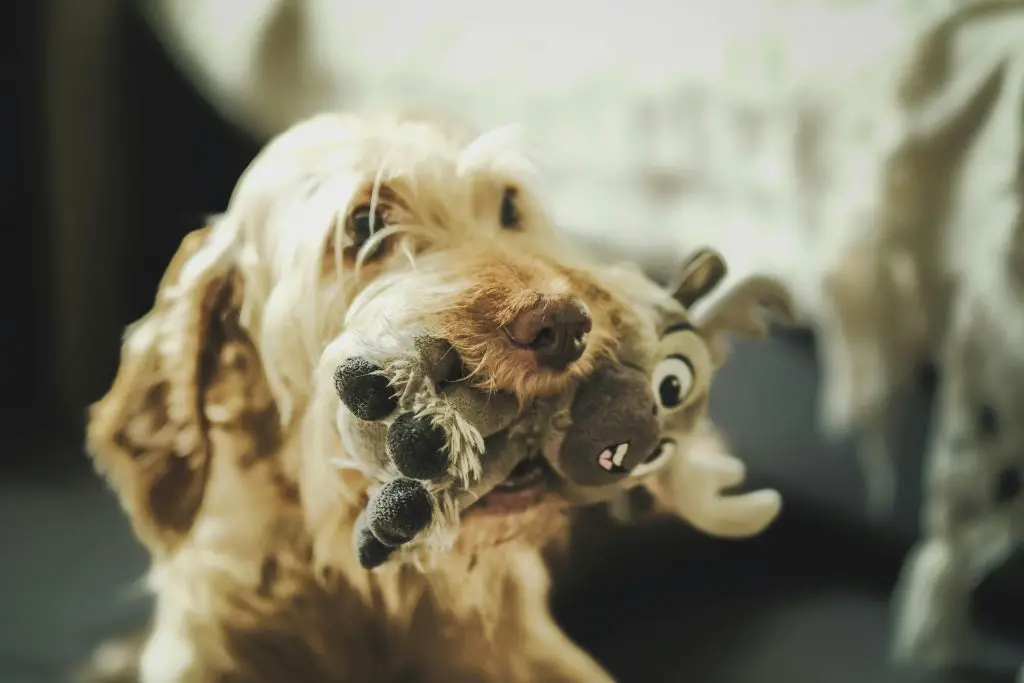
These toys will serve as the primary motivators in teaching them to put items away.
By focusing on their playtime preferences, you’ll make the training process more enjoyable and effective. Start by observing your dog’s behavioral cues to determine which toys they prefer.
Notice which ones they pick up first and play with the longest.
Gather these toys and get ready to use them for your training sessions. Here’s a simple way to organize the toys for easy access during training:
| Type of Toy | Description | Importance Level |
|---|---|---|
| Squeaky Toys | Toys that make noise | Significant |
| Chew Toys | Durable toys for chewing | Moderate |
| Fetch Toys | Balls or Frisbees | High |
Toy organization is key. Keep the selected toys in a designated area where you can quickly grab them when needed. This not only helps in maintaining a tidy environment but also reinforces the training routine.
Acquire Training Treats
To ensure successful training sessions, it’s essential to have a stash of high-quality training treats on hand to reward your dog for their efforts.

Opt for treats that are irresistible to your dog, as they’ll serve as powerful motivators during training. Choose small, soft treats that can be quickly consumed to maintain momentum during the training process.
Consider incorporating your dog’s favorite toy into the training routine, pairing it with the treat to reinforce positive behavior effectively.
In addition to treats, some dogs respond well to verbal praise or a brief play session as a reward.
Be mindful of your dog’s treat intake to prevent overfeeding, especially during longer training sessions.
Teach Basic Commands
Start by ensuring your dog understands essential commands like ‘sit,’ ‘stay,’ and ‘drop it.’ These basic commands form the foundation for more complex tasks, including putting away toys.
Trending in Dogs:

Use clicker training to mark the exact moment your dog performs the desired action.
The click sound will help your dog associate the action with a positive outcome. Pair this with treat motivation to reinforce good behavior. Begin with ‘sit.’
Hold a treat close to your dog’s nose, then move your hand up, allowing their head to follow the treat and causing their bottom to lower.
As soon as they sit, click the clicker and give them the treat. Repeat until they consistently sit on command.
Next, teach ‘stay.’ Ask your dog to sit, then open your palm in front of you and say ‘stay.’ Take a few steps back.
If they stay put, click the clicker and reward them. Gradually increase the distance and duration.
Introduce the Toy Bin
Now that your dog understands basic commands, it’s time to introduce the toy bin as their designated spot for putting away toys. Place the toy bin in a location that’s easily accessible for your dog.

Start by showing them the bin and letting them sniff it to get familiar. To make the process easier, pick a few toys to work with initially.
Use toy rotation to keep things interesting and prevent your dog from becoming overwhelmed.
Show your dog how to place a toy in the bin by doing it yourself a few times. Use simple commands like “put away” while pointing to the bin.
Here are some steps to help guide your training progress:
- Select a few toys: Use a small selection to keep it manageable.
- Demonstrate the action: Put a toy in the bin yourself while your dog watches.
- Use clear commands: Consistently use a phrase like “put away.”
- Encourage with rewards: Have training rewards ready to reinforce positive behavior.
Use Positive Reinforcement
Make sure to reward your dog immediately with treats and praise each time they successfully put a toy in the bin. This positive reinforcement will help them understand that this behavior is desired.

Clicker training can be particularly effective here.
Use the clicker the moment your dog drops the toy in the bin and follow it up with a treat. This creates a clear connection between the action and the reward. Incorporate training games to make the process enjoyable.
For instance, you can play fetch, but instead of just returning the toy to you, teach your dog to put it in the bin. Praise techniques, such as saying ‘Good job!’ or giving a belly rub, can also be used to reinforce this behavior.
Consistent positive reinforcement will make your dog enthusiastic to participate and learn.
Practice Consistently
To ensure your dog becomes proficient in tidying up toys, engage in brief, daily training sessions consistently.
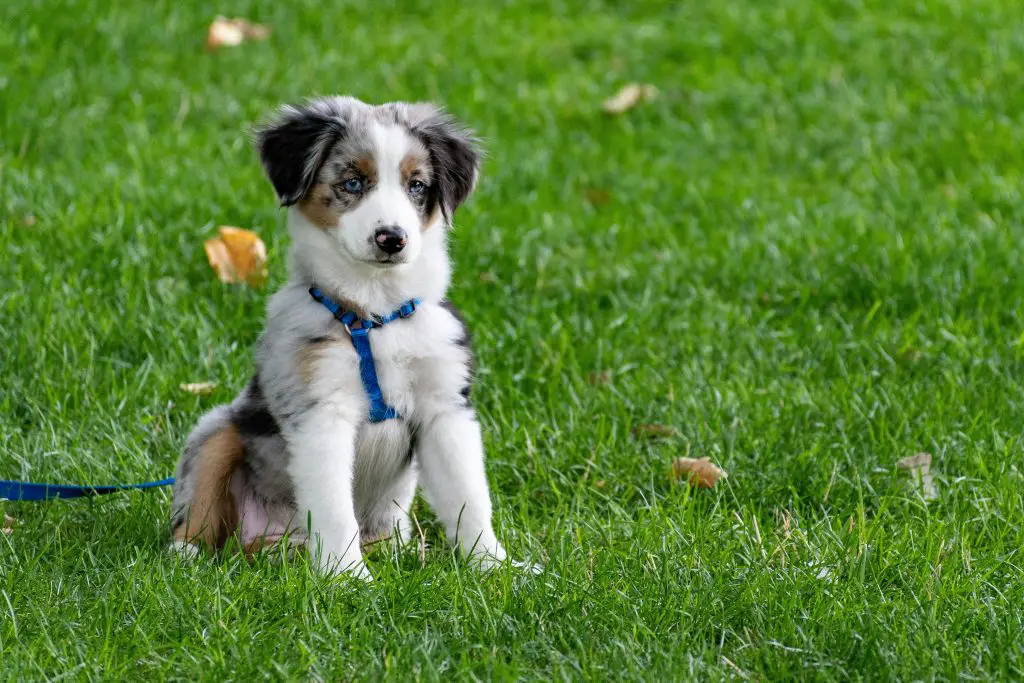
This method aids in clarifying the task for your dog and reinforces desirable behavior, making it an enjoyable experience for both of you.
Incorporate a reward system during these sessions to motivate your dog. Treats, praise, and playtime serve as effective reinforcements for the desired behavior.
Monitor your dog’s progress during training and remain patient through any obstacles. Remember, every dog learns at their own pace, so maintain a positive and consistent approach.
To maximize the effectiveness of your practice sessions, consider the following tips:
- Keep it Short: Limit each session to 5-10 minutes to maintain your dog’s attention and enthusiasm.
- Stay Consistent: Establish a regular training schedule to make it a part of your daily routine.
- Use Clear Commands: Employ simple and consistent phrases like ‘put away’ or ‘tidy up’ to avoid confusion.
- Celebrate Success: Immediately reward your dog upon completion of the task to reinforce the positive behavior.
Gradually Increase Difficulty
As your dog improves at tidying up toys, introduce more challenging tasks gradually. Start by spreading toys around the room to encourage your dog to search and retrieve each one individually.
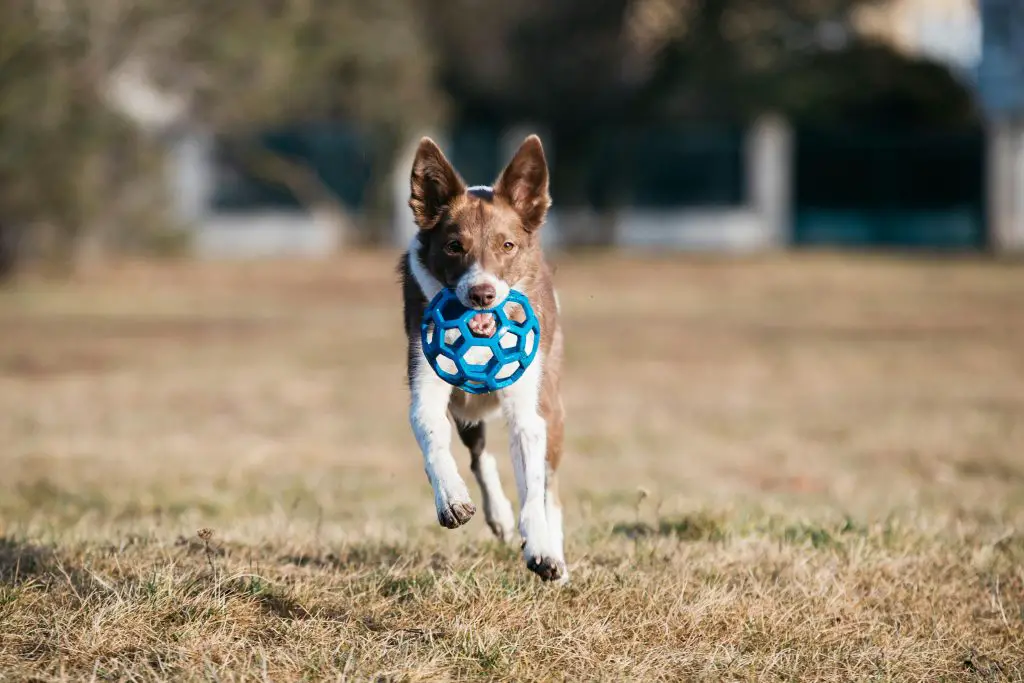
This will engage different skills and keep them mentally stimulated.
You can enhance the difficulty by hiding toys in various locations for your dog to find and collect. Introducing new types of toys or using a timer can also make the activity more engaging and exciting.
For example, have your dog put away plush toys one day and rubber toys the next.
Remember to always use positive reinforcement like treats and praise to motivate your dog’s progress. By increasing the complexity of tasks, you can continue to challenge your dog and strengthen their skills in toy organization.
Maintain the Habit

To maintain the habit, make toy tidy-up a part of your dog’s daily routine. Use positive reinforcement techniques like treats and praise to keep your dog motivated.
Consistent practice will guarantee the behavior sticks and becomes second nature for your furry friend.
Consistent Daily Practice
Incorporate a few minutes of toy clean-up into your dog’s daily routine to reinforce the habit and ensure consistent practice. Create a schedule that includes this task at the same time each day.
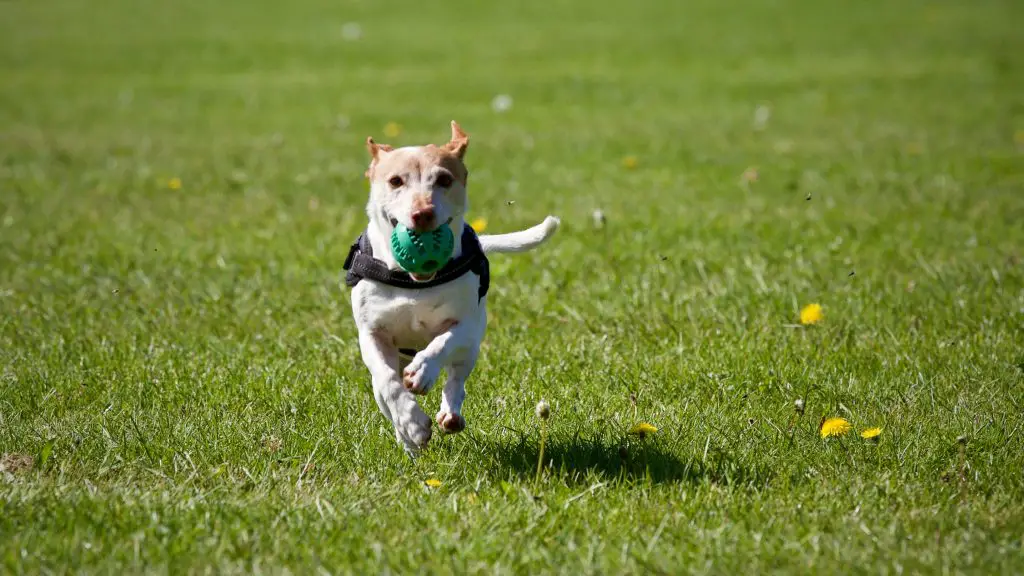
This consistency helps your dog understand that putting away toys is a regular part of the day. Use rewards to motivate your dog and show them that their efforts are appreciated.
Consistency and patience are key. Don’t expect your dog to master this skill overnight.
Repetition is essential to building a strong habit. Here are some tips to keep you on track:
- Keep sessions short: Limit clean-up time to a few minutes to maintain your dog’s interest.
- Use a specific command: Stick to one phrase, like ‘put away,’ to provide clear instructions.
- Be patient: Every dog learns at their own pace. Celebrate small milestones.
- Reward generously: Treats and praise reinforce positive behavior and make the process enjoyable.
Positive Reinforcement Techniques
Use treats and enthusiastic praise to reinforce your dog’s positive behavior when they successfully put away their toys. Each time your dog drops a toy into the designated bin, give them a treat and plenty of praise.
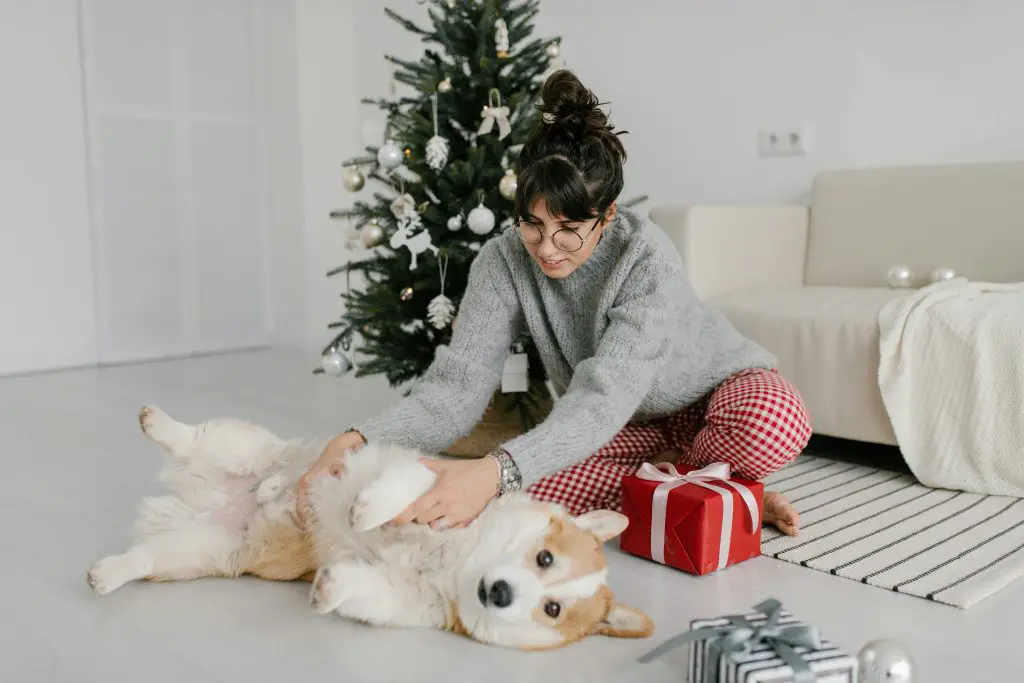
This immediate reward helps in shaping behavior, making it clear that putting away toys is a desirable action. Consider incorporating clicker training to mark the exact moment they perform the correct behavior.
A clicker is a small device that makes a distinct sound, letting your dog know they did something right. This method can speed up the learning process by providing a consistent marker for good behavior.
Don’t forget to make interactive play a part of the training routine. Engaging your dog in activities that offer mental stimulation won’t only make the process fun but also help them understand the task better.
Consistency is key, so maintain this positive reinforcement technique even after your dog seems to have learned the behavior. Regularly practicing and rewarding your dog guarantees that they keep up the habit.
Always be patient and encouraging, as this will make training a positive experience for both you and your dog.
Frequently Asked Questions
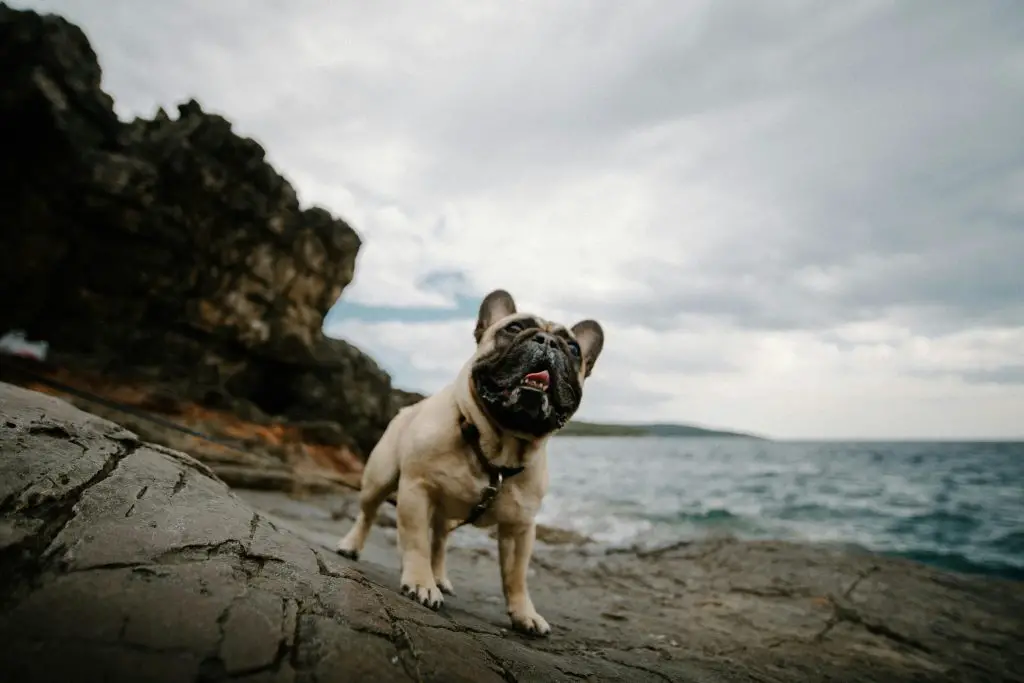
Training progress varies; with consistency and a solid reward system, you’ll see improvement in a few weeks. Challenges are normal, but patience and positive reinforcement will help your dog succeed faster
Start training your dog as early as 8-10 weeks old. Use positive reinforcement and consistent training methods.
Yes, senior dogs can learn to put away toys! Training older dogs taps into their existing maturity and understanding of canine behavior.
Use positive reinforcement during playtime to make the process enjoyable and effective for them.
When your dog loses interest, you must deploy superhero-level motivating techniques!
Use reinforcement methods like treats and praise.
To maintain focus, keep sessions short and lively.
Overcoming distractions is key; eliminate any external noises or interruptions.
To help your dog overcome fear of the toy bin, use desensitization training. Gradually introduce the bin with treats and praise.
If needed, use alternative methods like building confidence with smaller steps or different containers.
Conclusion
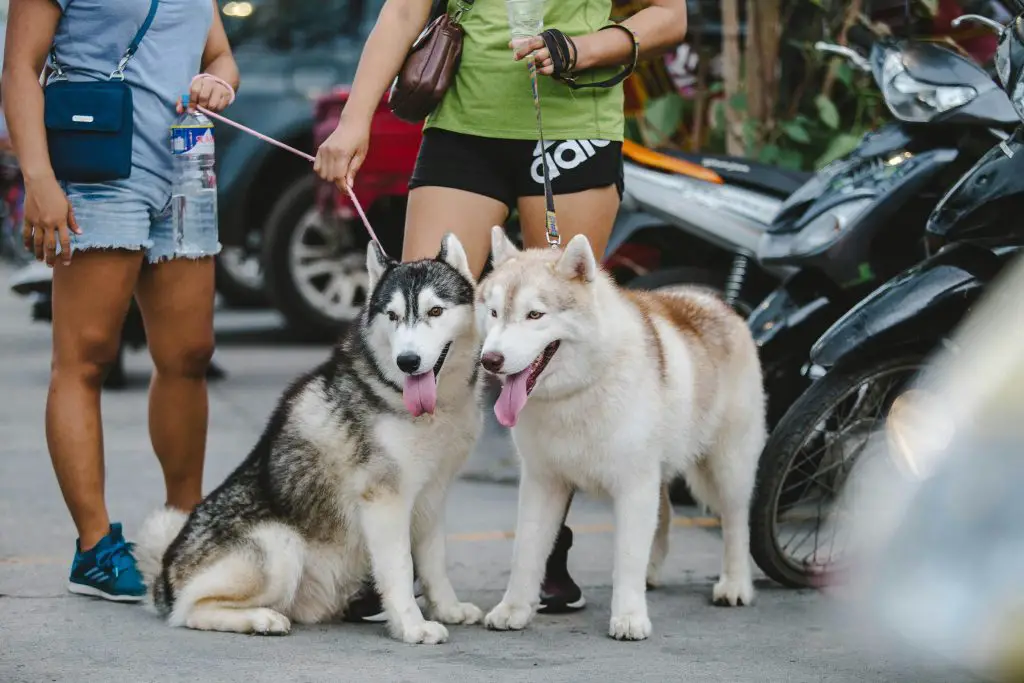
Training your dog to put away toys isn’t just a fun trick; it boosts their cognitive abilities. Did you know that dogs can understand up to 250 words and gestures?
Consistent practice, positive reinforcement, and gradually increasing the difficulty will make this habit stick. You’ve got this!
With patience and dedication, your furry friend will soon be tidying up like a pro. Keep up the great work and enjoy the bonding time with your pup!







